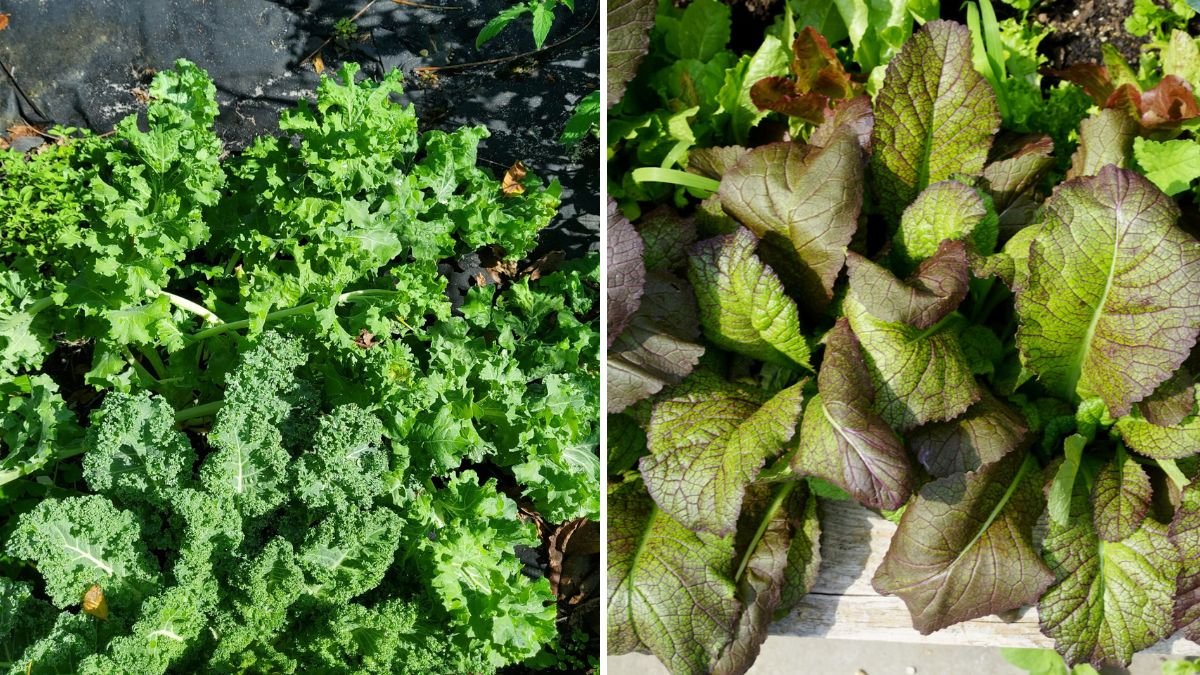Leafy greens are among the most versatile and nutrient-dense vegetables you can grow at home. Spinach, kale, lettuce, mustard greens, and Swiss chard are packed with vitamins, minerals, antioxidants, and fiber, making them essential components of a healthy diet. Growing leafy greens year-round ensures a constant supply of fresh, organic produce, reduces grocery costs, and supports sustainable living.
Whether you have a backyard garden, balcony, or indoor space, leafy greens are well-suited for continuous cultivation due to their short growth cycles and adaptability to containers, raised beds, and hydroponic systems. This guide provides a comprehensive 5-step approach to growing leafy greens year-round, covering selection, soil preparation, planting, care, and harvesting.
Step 1: Selecting Suitable Leafy Greens
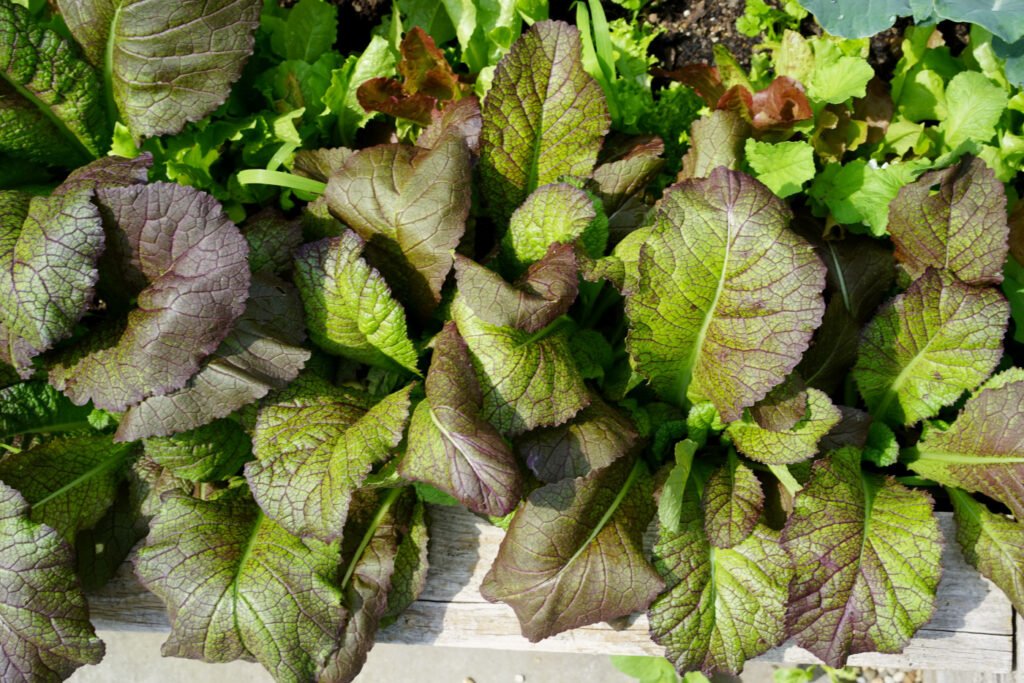
The first step to successful year-round cultivation is choosing the right leafy greens. Some varieties thrive in cooler seasons, while others tolerate heat.
- Cool-Season Greens:
- Spinach, kale, arugula, lettuce, and mustard greens grow best in cooler temperatures (50–70°F / 10–21°C).
- These greens are ideal for fall, winter, and early spring cultivation.
- Warm-Season Greens:
- Malabar spinach, amaranth, and Swiss chard tolerate warmer climates (70–85°F / 21–29°C).
- These varieties are suitable for summer growing or tropical regions.
- Continuous Harvest Varieties:
- Choose “cut-and-come-again” varieties, which allow harvesting of leaves without uprooting the plant.
- This approach ensures a steady supply of greens over multiple weeks.
- Seed Selection:
- Purchase certified, disease-free seeds from reputable suppliers.
- Consider heirloom or hybrid varieties for disease resistance, flavor, and productivity.
Selecting the right leafy greens ensures compatibility with your climate, growing space, and desired harvest schedule.
Step 2: Preparing Soil or Growing Medium
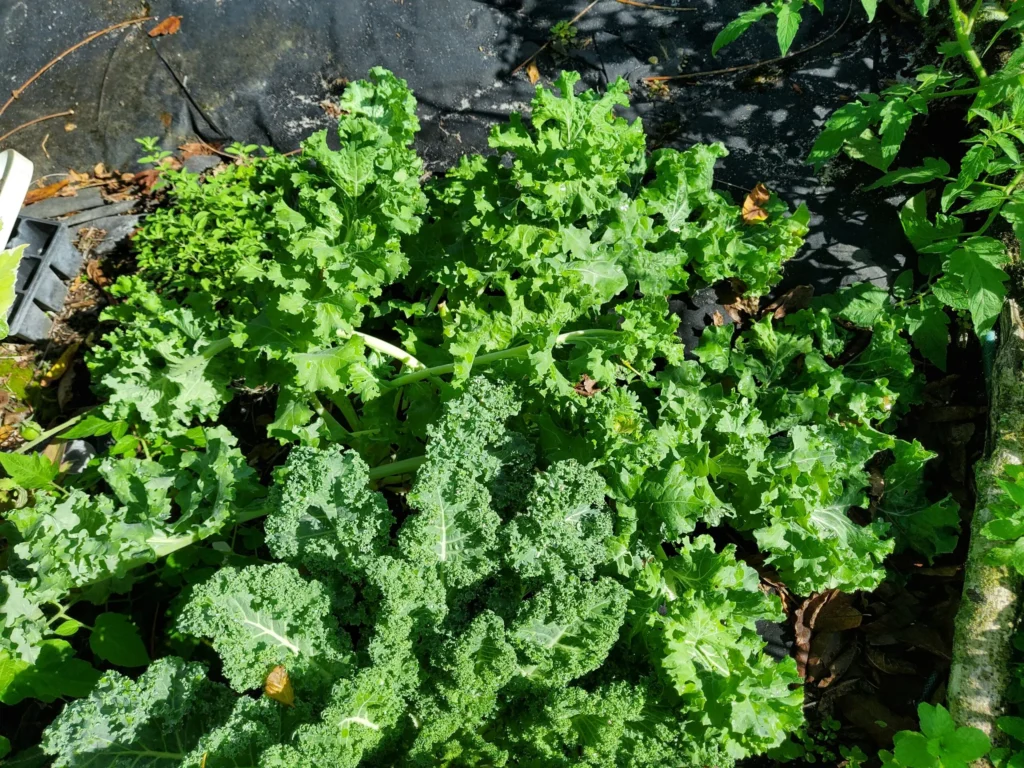
Leafy greens grow best in fertile, well-draining soil or soilless media for containers and hydroponics.
- Soil-Based Cultivation:
- Use loamy, well-draining soil enriched with organic compost or well-rotted manure.
- Maintain a slightly acidic to neutral pH of 6.0–7.0.
- Incorporate coarse sand to improve drainage and prevent root rot.
- Container Growing:
- Leafy greens thrive in containers at least 6–8 inches deep.
- Use a mix of garden soil, compost, and cocopeat for moisture retention and aeration.
- Ensure containers have drainage holes to prevent waterlogging.
- Hydroponic or Soilless Media:
- Rockwool, perlite, vermiculite, and coco coir are ideal for hydroponic systems.
- Nutrient solutions must contain balanced nitrogen, phosphorus, potassium, calcium, and magnesium.
- Regular monitoring of pH (5.5–6.5) and EC (electrical conductivity) ensures optimal nutrient uptake.
Well-prepared soil or growing medium supports strong root development, healthy foliage, and high yields.
Step 3: Sowing Seeds and Transplanting
Proper sowing and transplanting techniques are essential for robust, productive plants.
- Direct Sowing:
- Sow seeds ¼–½ inch deep in rows or containers.
- Space seeds 1–2 inches apart to allow proper leaf growth and airflow.
- Thin seedlings once they reach 2–3 inches tall to prevent overcrowding.
- Seedling Transplanting:
- Start seeds in seed trays or small pots for early-season growth.
- Transplant seedlings to containers or garden beds when they develop 2–4 true leaves.
- Maintain 6–12 inches spacing between plants depending on the leafy green variety.
- Timing for Year-Round Growth:
- Stagger sowing every 2–3 weeks to ensure continuous harvest throughout the year.
- Adjust planting schedules according to seasonal temperature and light availability.
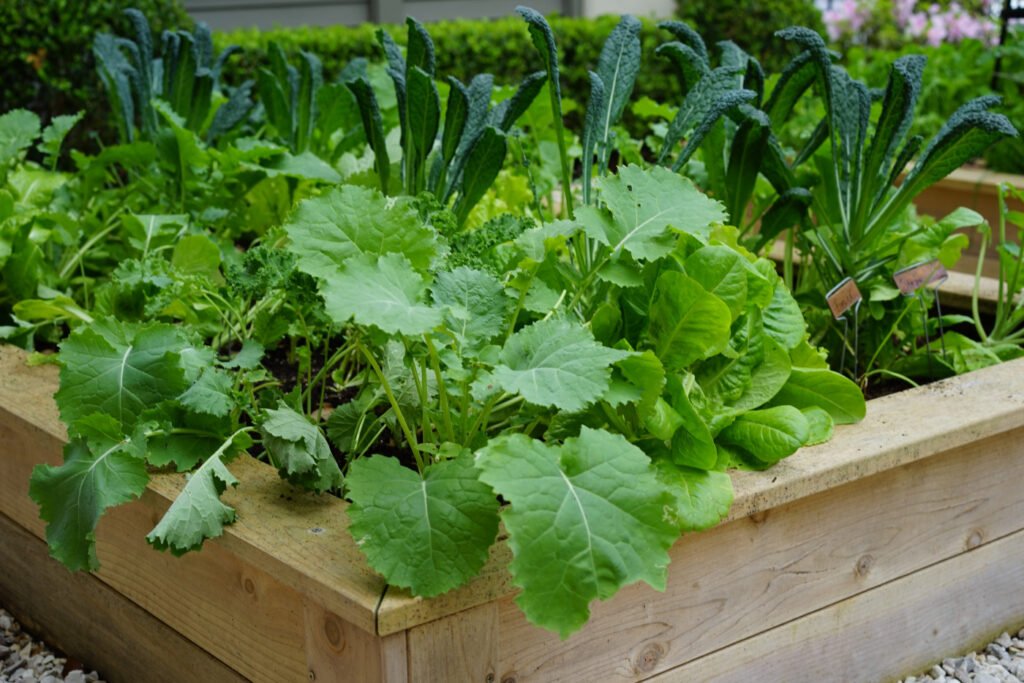
Correct sowing and transplanting techniques maximize germination, reduce competition, and promote consistent yields.
Step 4: Caring for Leafy Greens
Leafy greens require proper care for optimal growth and continuous production.
- Watering:
- Keep the soil consistently moist but not waterlogged.
- Water deeply 2–3 times per week depending on climate and container size.
- Mulch around plants to retain soil moisture and prevent weed growth.
- Fertilization:
- Leafy greens are nitrogen-loving plants.
- Apply balanced organic fertilizer or compost tea every 3–4 weeks.
- For hydroponic systems, ensure nutrient solution is renewed every 7–10 days.
- Sunlight and Temperature:
- Leafy greens require 4–6 hours of sunlight daily for healthy leaf development.
- For indoor or low-light conditions, use full-spectrum LED grow lights to supplement natural light.
- Protect cool-season greens from extreme heat using shade nets.
- Pest and Disease Management:
- Common pests include aphids, leaf miners, and caterpillars.
- Use neem oil, insecticidal soap, or companion planting with garlic, marigold, or basil to deter pests.
- Rotate crops or use clean growing media to prevent fungal diseases and leaf blight.
- Pruning and Harvesting for Continuous Growth:
- Use “cut-and-come-again” harvesting by trimming outer leaves first.
- Avoid removing the central growing point to allow regrowth.
- Regular harvesting encourages new leaf production and prevents bolting.
Proper care ensures lush, flavorful leaves and a steady supply of produce year-round.
Step 5: Harvesting and Storage
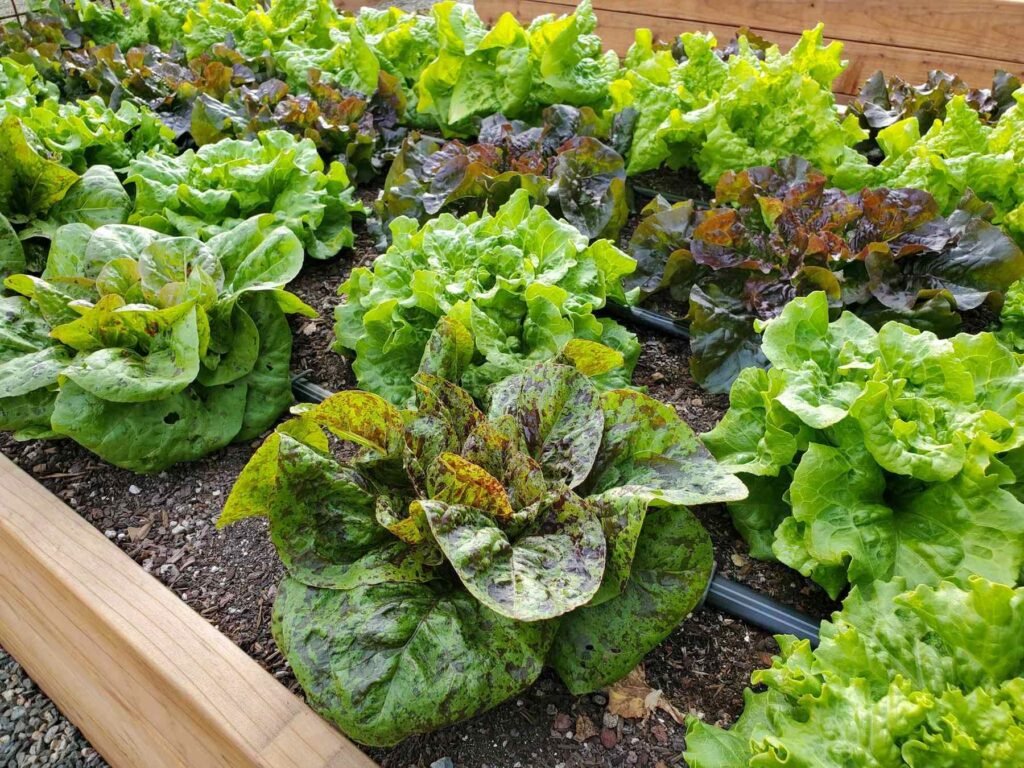
Timely harvesting and proper storage are crucial for quality and extended shelf-life.
- Harvest Timing:
- Leafy greens are generally ready to harvest 30–60 days after sowing, depending on the variety.
- Harvest before flowers appear for best flavor, as bolting can make leaves bitter.
- Harvesting Technique:
- Cut outer leaves with clean scissors or a sharp knife, leaving the inner leaves to grow.
- For lettuce or kale, harvest 3–4 inches above the soil for continuous regrowth.
- Post-Harvest Handling:
- Rinse leaves gently with clean water to remove dust and pests.
- Store in perforated plastic bags or airtight containers in the refrigerator.
- Use harvested leaves within 3–5 days for optimal taste and nutrition.
- Succession Harvesting:
- Plant new seeds every 2–3 weeks to maintain a continuous supply throughout the year.
- Use staggered sowing in multiple containers or garden beds for uninterrupted harvests.
Timely harvesting and proper storage maintain leaf quality, flavor, and nutritional value.
Additional Tips for Year-Round Leafy Green Gardening
- Indoor Gardening:
- Leafy greens can be grown indoors using containers or hydroponic systems, ensuring fresh produce even in winter.
- Seasonal Adjustments:
- Protect cold-sensitive greens in winter using plastic covers or mini-greenhouses.
- Use shade cloth during peak summer to prevent bolting and heat stress.
- Companion Planting:
- Plant leafy greens with herbs or flowers like basil, marigold, or nasturtium to deter pests naturally.
- Organic Practices:
- Use compost, vermicompost, or organic fertilizers to promote chemical-free, healthy produce.
- Succession Planting:
- Continuous sowing every few weeks ensures uninterrupted harvests and efficient use of space.
These practices optimize yields, reduce pest issues, and ensure sustainable gardening throughout the year.
Benefits of Growing Leafy Greens Year-Round
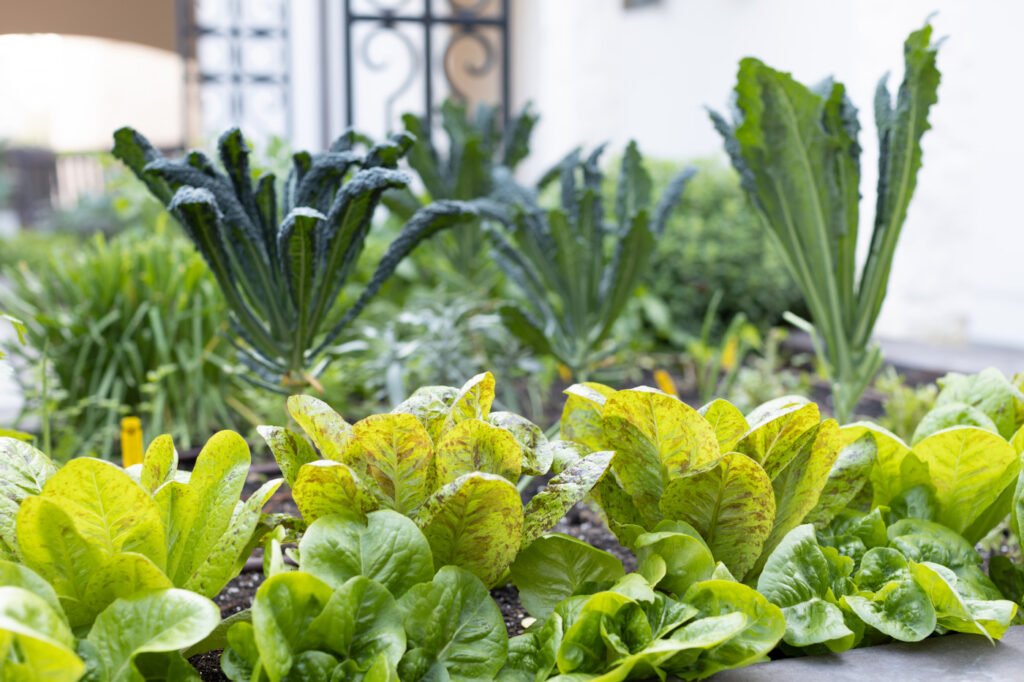
- Health Benefits: Fresh, organic leafy greens are rich in vitamins, minerals, and antioxidants.
- Continuous Supply: Year-round cultivation ensures a constant supply for salads, cooking, and smoothies.
- Cost-Effective: Reduces dependence on store-bought greens and minimizes grocery bills.
- Sustainable Living: Promotes eco-friendly gardening by reducing packaging waste and pesticide use.
- Urban Gardening: Suitable for limited spaces, balconies, terraces, and indoor setups.
Growing leafy greens year-round combines nutrition, sustainability, and convenience, making it ideal for modern households.
Conclusion
Year-round cultivation of leafy greens is both practical and rewarding for home gardeners. By following this 5-step guide—selecting suitable greens, preparing soil or growing media, sowing seeds and transplanting, caring for plants, and harvesting correctly—you can maintain a continuous supply of fresh, nutrient-rich produce.
Proper care, consistent harvesting, and attention to seasonal adjustments allow leafy greens to thrive in containers, raised beds, or hydroponic systems, regardless of weather conditions. With patience and dedication, anyone can enjoy homegrown, organic leafy greens throughout the year, improving health, reducing waste, and promoting sustainable gardening practices.
Whether you are a beginner or an experienced gardener, this step-by-step approach ensures lush, productive, and chemical-free leafy green cultivation all year long.
